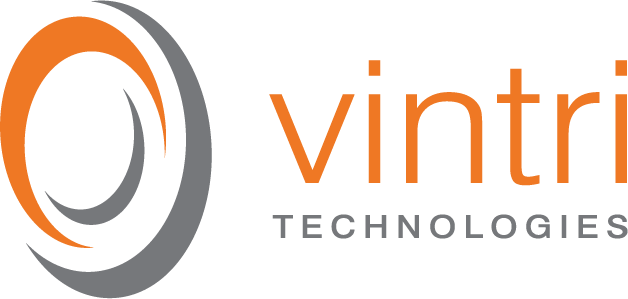The Critical Role of Material Traceability in Midstream Operations
Material traceability refers to the capability to track and record the entire journey of materials, from their origin to their final destination.
In the ever-evolving landscape of midstream operations, material traceability has emerged as a crucial element for pipeline owners and operators. It encompasses the comprehensive identification and tracking of materials, ensuring a clear record of their origin, composition, and distribution. This article delves into the importance of material traceability, its benefits, and how Vintri Technologies’ data management platform, vintriCORE, stands out as a leading solution in this domain.
Defining Material Traceability in Midstream Operations
Material traceability refers to the systematic process of recording the journey of materials from their origin to their final destination. In the context of midstream operations, this involves tracking materials used in pipelines, ensuring that all components meet regulatory requirements, and maintaining a detailed record of each material's provenance. This process is critical for compliance with the Pipeline and Hazardous Materials Safety Administration (PHMSA) regulations, which mandate stringent record-keeping for pipeline materials.
Where Does Material Traceability Information Come From?
Material traceability origin and product attribute data comes from suppliers at every level of a supply chain. Historically, this information was submitted in paper or PDF format, which made tracking cumbersome and prone to errors. Now, operators are demanding that supply chain companies provide their data in pre-determined digital formats. This shift ensures that the data can be easily tracked and integrated by the operator using a data management solution. By digitizing this information, the process becomes more streamlined, accurate, and accessible, facilitating end-to-end traceability.
The Benefits of Material Traceability
Meeting Regulatory Requirements Efficiently: Compliance with regulatory standards is paramount in midstream operations. Material traceability ensures that all materials used in pipelines are documented in accordance with PHMSA requirements, reducing the risk of non-compliance and potential penalties. By maintaining a comprehensive record, pipeline operators can swiftly respond to regulatory audits and demonstrate adherence to safety standards.
Maximizing Divestiture Value: When it comes to the resale value of infrastructure, having a clear and accurate record of material traceability is invaluable. Prospective buyers and investors are more likely to trust and invest in assets that have a well-documented history, thereby enhancing the divestiture value. This transparency not only boosts investor confidence but also facilitates smoother transactions.
Enhancing Safety: Safety is a top priority in midstream operations. Material traceability plays a crucial role in ensuring that all components of a pipeline meet the required safety standards. By having detailed records of material origins, compositions, and manufacturing dates, operators can quickly identify and address potential safety issues, preventing accidents and ensuring the integrity of the pipeline infrastructure.
Optimizing Efficiencies: Effective material traceability streamlines operations by providing a clear and organized record of all materials. This facilitates better inventory management, reduces the likelihood of material shortages or overstocking, and enhances overall operational efficiency. Additionally, it allows for quicker identification and resolution of issues, minimizing downtime and operational disruptions.
The Challenges of Achieving Efficient and Effective Material Traceability
Owner-operators have sought material traceability capabilities long before safety regulations were implemented. However, the challenge has always been making this process accurate, efficient, and effective. Historically, material traceability has involved extensive paperwork, including purchase orders, bills of lading, and evidence of receipt. Validating the documentation itself, let alone the goods it pertains to, has been a daunting task, especially with the growing scale of global economies.
Documenting material traceability on paper is completely inefficient and does not permit easy access to information when needed. Going back to look up records can be time-consuming and error-prone, making it difficult to trace the journey of any particular component. This inefficiency underscores the importance of transitioning to digital solutions.
Vintri Technologies’ vintriCORE: A Leading Solution
Vintri Technologies’ vintriCORE stands out as an exceptional data management platform tailored to the needs of North American midstream companies. It ensures that asset and operational data are accurate, accessible, and maintain true source traceability. Here’s how vintriCORE excels:
Fully Traceable Data: vintriCORE maps all asset data to organizational standards while preserving source data records for complete auditability and traceability. This ensures that all data sets meet engineering requirements, procurement conditions, and traceability regulations.
Comprehensive Data Integration: The platform allows for the integration of data from various stakeholders, creating a unified and flexible model that supports cross-comparison and ensures compliance with project requirements.
Enhanced Recall and Traceback Capabilities: vintriCORE captures event and attribute data for batch or serialized products, enabling precise and efficient recalls and tracebacks. This feature is crucial for maintaining safety and compliance in midstream operations.
Instant Digital Access: vintriCORE transforms material traceability from a cumbersome paper-based process to an efficient digital one. This allows for easy, instant access to look up records and determine the journey of any particular component, vastly improving response times and accuracy.
Extensible and Integrative: With native reporting capabilities and extensible attributes for sustainability or product composition analysis, vintriCORE can be seamlessly integrated with other systems through APIs, offering a holistic solution for material traceability.
Conclusion
Material traceability is indispensable for midstream operations, offering significant benefits in regulatory compliance, safety, efficiency, and asset value. Vintri Technologies’ vintriCORE platform provides a robust solution for managing and preserving material traceability, ensuring that midstream companies can operate with confidence and transparency. As the industry continues to evolve, embracing advanced data management solutions like vintriCORE will be key to maintaining competitive advantage and operational excellence.




